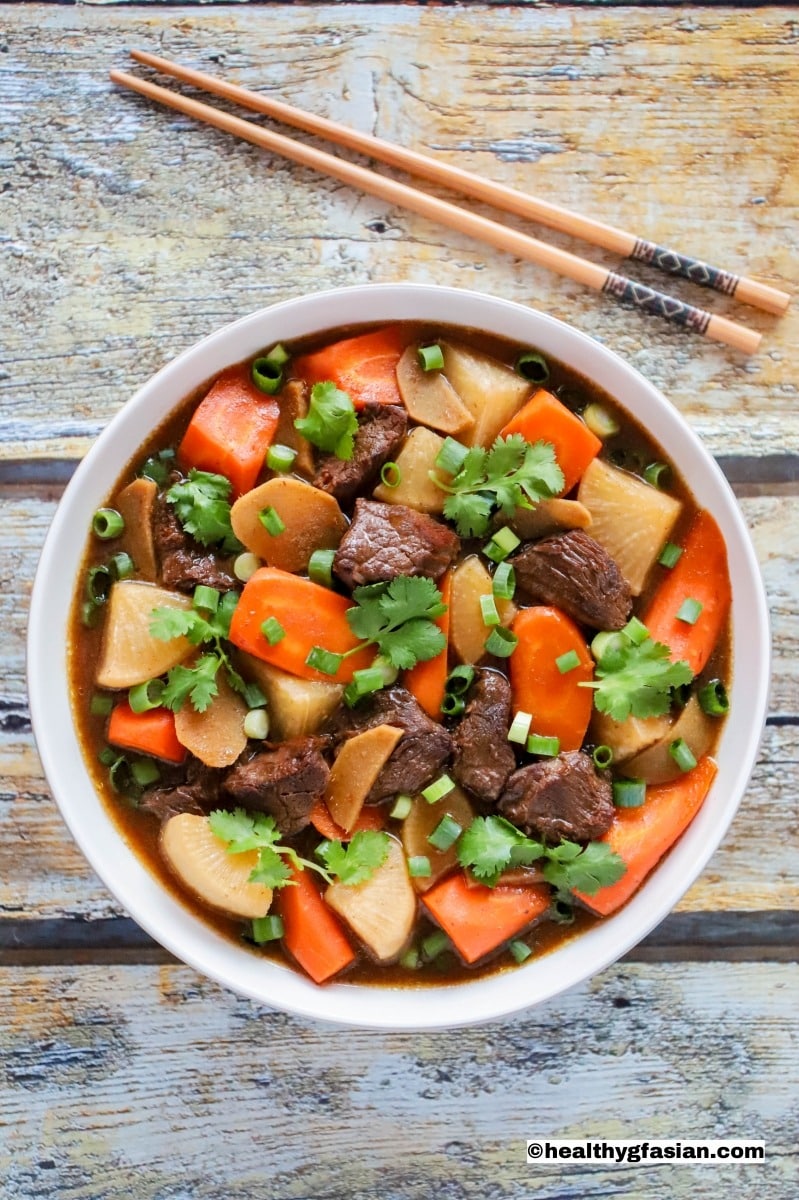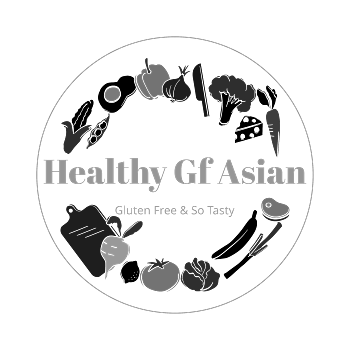Cantonese Braised Beef like its name suggests, originated from Guangdong province of Southern China. Overall, the main ingredients used for this popular Cantonese Braised Beef are beef brisket and daikon. Then slow cooked in a flavourful sauce. Besides, Chinese chefs will make the fragrant sauce with garlic, ginger, chu hou paste (fermented soybean paste). As well as hoisin sauce, oyster sauce, Shaoxing wine, light and dark soy sauce. Additionally, the chefs will add spices like star anise, cloves, dried orange peel, and dried bay leaves.
What is Chinese Red Braising?
Chinese red braising is a technique for slow cooking meat in sauce. They make the sauce with light and dark soy sauce, fermented bean paste and rock sugar. As a result, the sauce has a caramelized taste and reddish brown tint. In addition, red braising is very similar to braises, stews and casseroles. Because they are feel good or comfort food that will delight the entire family. Moreover, just like many well-liked food, there are many variations to Chinese braised dishes. While they usually adapt the dish by regions in China or by the preferences of the home cooks. Cantonese chefs have created Cantonese Braised Beef as a local adaptation in the Southern region of China.
For my Instant Pot Cantonese Braised Beef recipe, my main ingredients are gravy beef (beef shin), daikon and carrots. However, you can substitute daikon with parsnip or potato if preferred. Then cooked in a simple and fragrant soy free sauce. Besides, I made with sauce with garlic, ginger, blackstrap molasses, coconut aminos, medium dry sherry and salt. Additionally, spices added are star anise, cloves, dried orange peel, and dried bay leaves. This instant pot recipe is also low carbs, dairy free, egg free, nut free, corn free and refined sugar free. As well as refined sugar free and paleo without the rice. For people on a paleo diet , serve this Cantonese Braised Beef with cauliflower rice.
Check out my other beef recipes: Instant Pot Braised Beef and Ginger Wine and Beef with Chinese Water Chestnuts Stew.
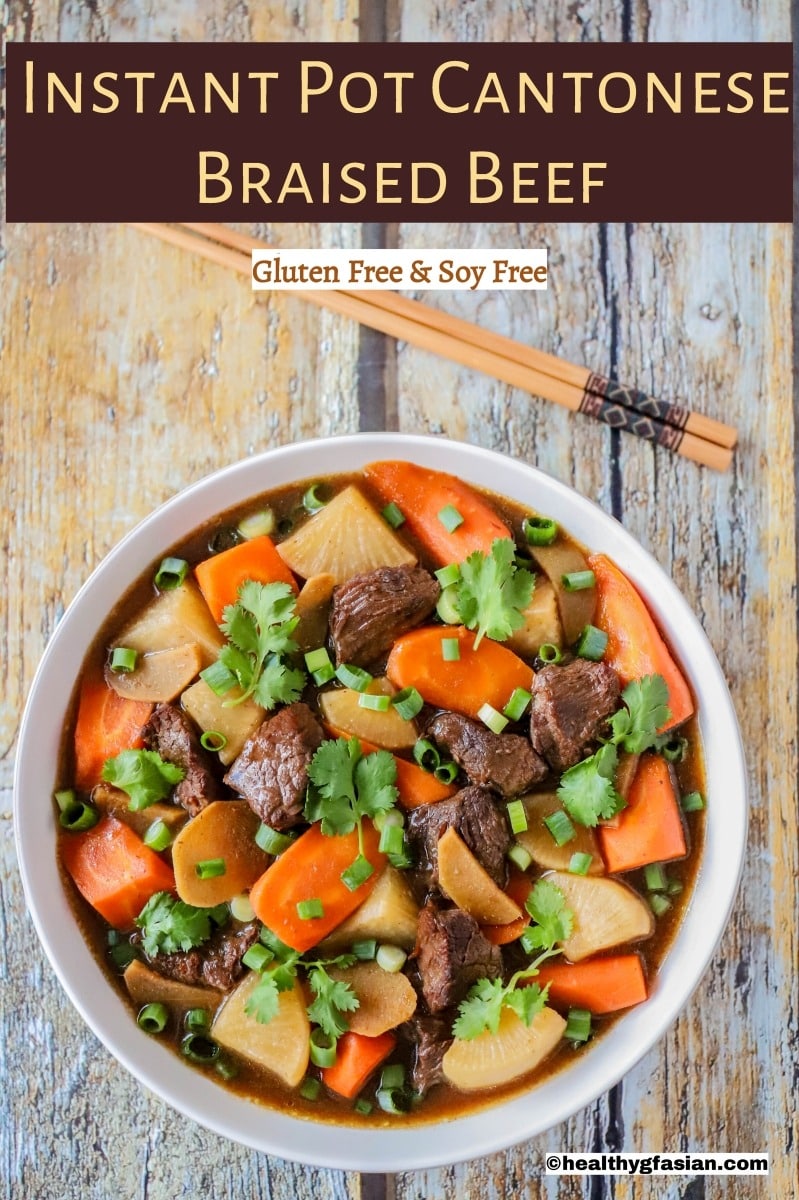
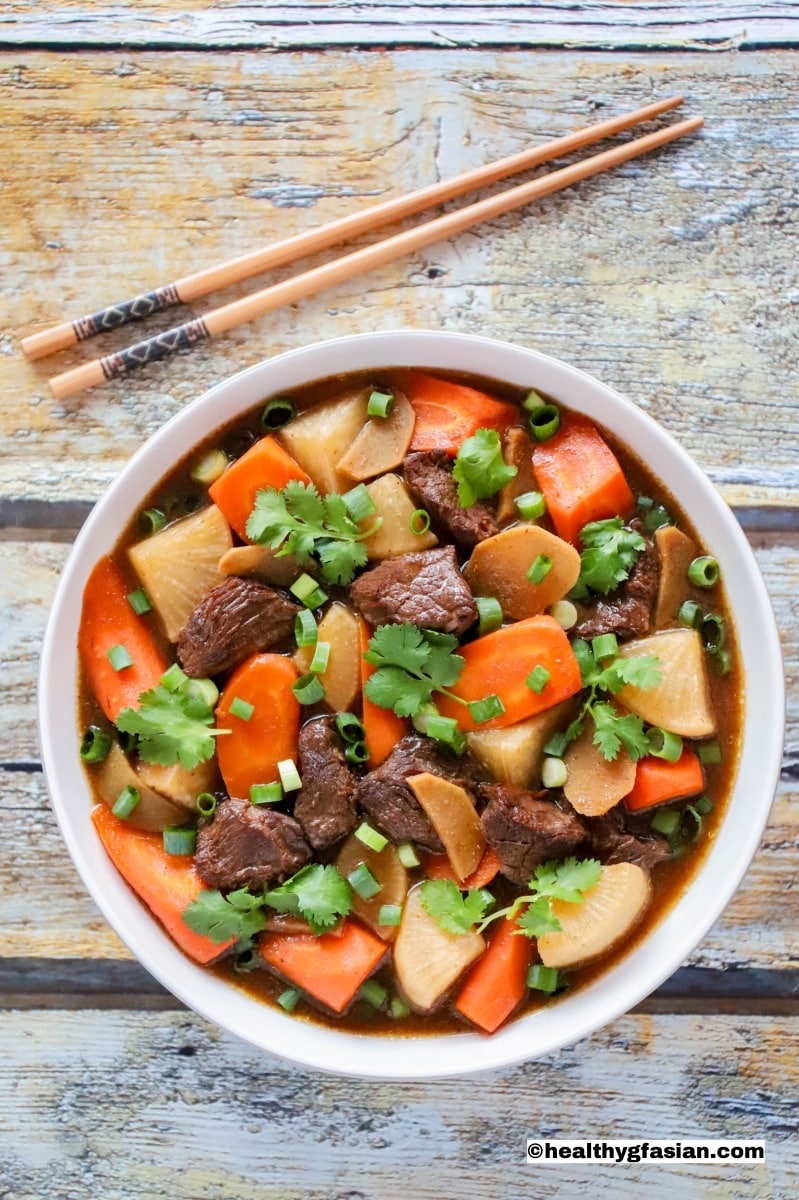
History of White Radish (Daikon)
Daikon (Raphanus sativus var. longipinnatus)is a winter radish with turnip like white root. It looks like a large carrot with a bland taste and a little sweet yet spicy flavour. Daikon literally means large root in Japanese. Furthermore, other common names are white radish, Asian radish and Chinese radish. Also called long white radish, oilseed radish, icicle radish, Japanese radish or daikon radish. It is a cruciferous vegetable that belongs to the edible root vegetables of the Brassicaceae family. Daikon originated from the Mediterranean many thousand years ago. Subsequently, traders and travelers introduced daikon to Japan more than 3,000 years ago, followed by China over 2,500 years ago.
Versatility of Daikon in Culinary Uses
Today, farmers grow Daikon worldwide with Japan being the largest producer. Besides, daikon is an extremely versatile vegetable in culinary uses. We can eat daikon raw, stir-fried, grilled, baked, boiled or broiled. Moreover, Japanese chefs make them into pickles, or prepare them shredded. Then added to condiments and sauces, salads, soups, stir-fries, and stews. Other ways of enjoying daikon is in the form of baked chips, grated and dried, and eaten as a snack. Whereas, Chinese chefs use daikon to make turnip and radish cakes. They add daikon to vegetarian spring rolls, braises, soups, stir-fries and even pickled. Daikon is a unique and typical ingredient used in this Instant Pot Cantonese Braised Beef dish.
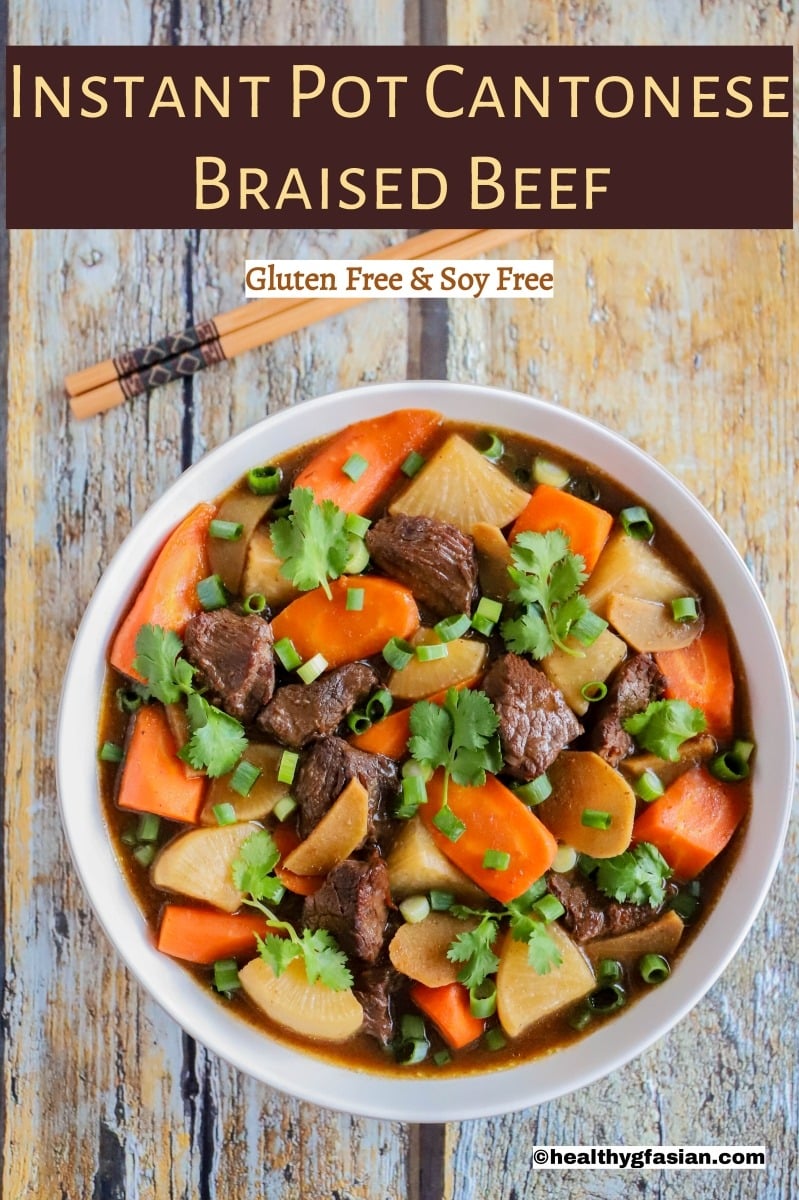
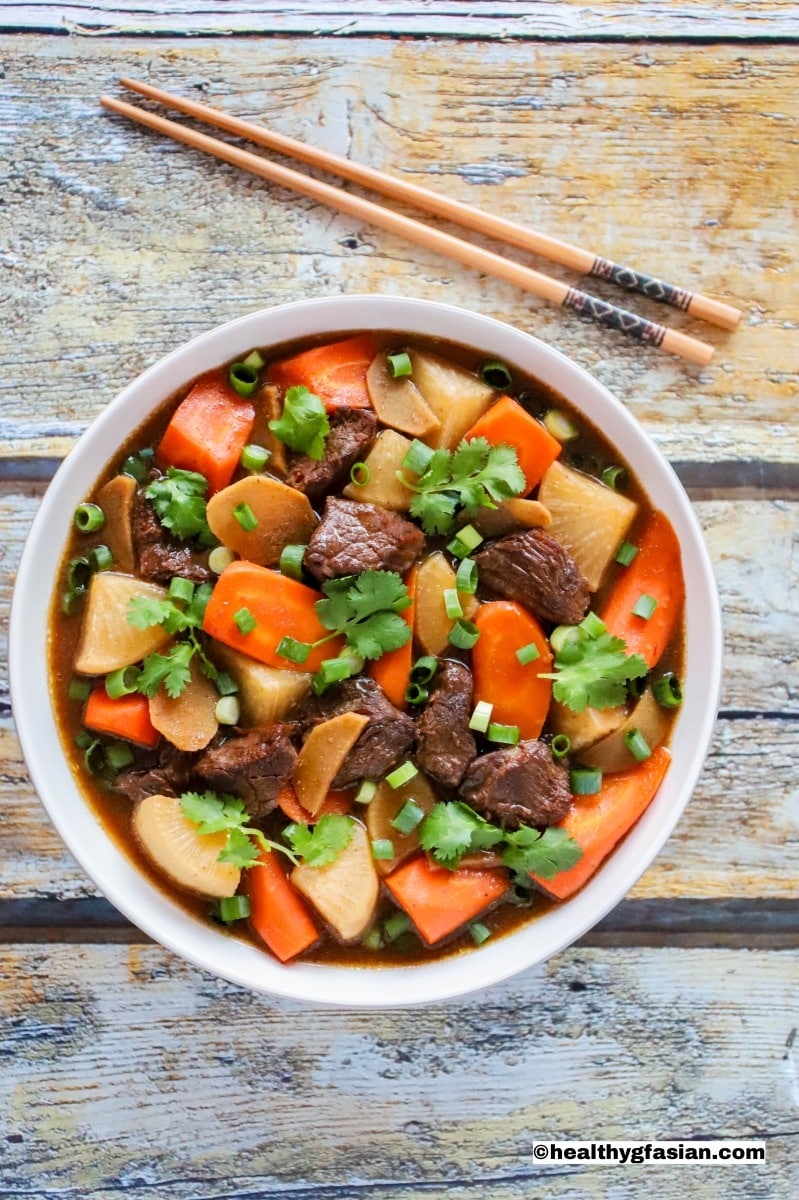
Nutritional values and Health Benefits of Daikon
Daikon is very low in calories and carbohydrates with high dietary fiber content. Likewise, it is a nutritious food and an excellent source of vitamin C. Besides, Daikon is a superb source of copper, potassium and folate (vitamin B9). Furthermore, it contains high antioxidants and comprises numerous beneficial enzymes and phytonutrients like quercetin and ferulic acid. Daikon also has antimicrobial properties with significant antibacterial and antiviral effects.
The overall health benefits of daikon may include:
- Promotes healthy digestive system;
- Helps detoxify the body as it is a known natural diuretic;
- Boosts the immune system;
- Decrease the risk of colon cancer and other cancer;
- Reduces the risks of cardiovascular diseases;
- Aids in weight loss;
- Supports healthy bones;
- Help maintains healthy skin; and
- Reduce the risks of inflammatory diseases like arthritis.
Choosing and Storing Daikon
Take note that when purchasing daikon, ensure that you pick those with no growth splits and bruises and feels heavy. Select daikon with firm roots, glossy skin and unwithered green crisp leaves. In addition, store daikon stores well in the refrigerator in an air-tight container. Or in sealed plastic bag to preserve high level of moisture.
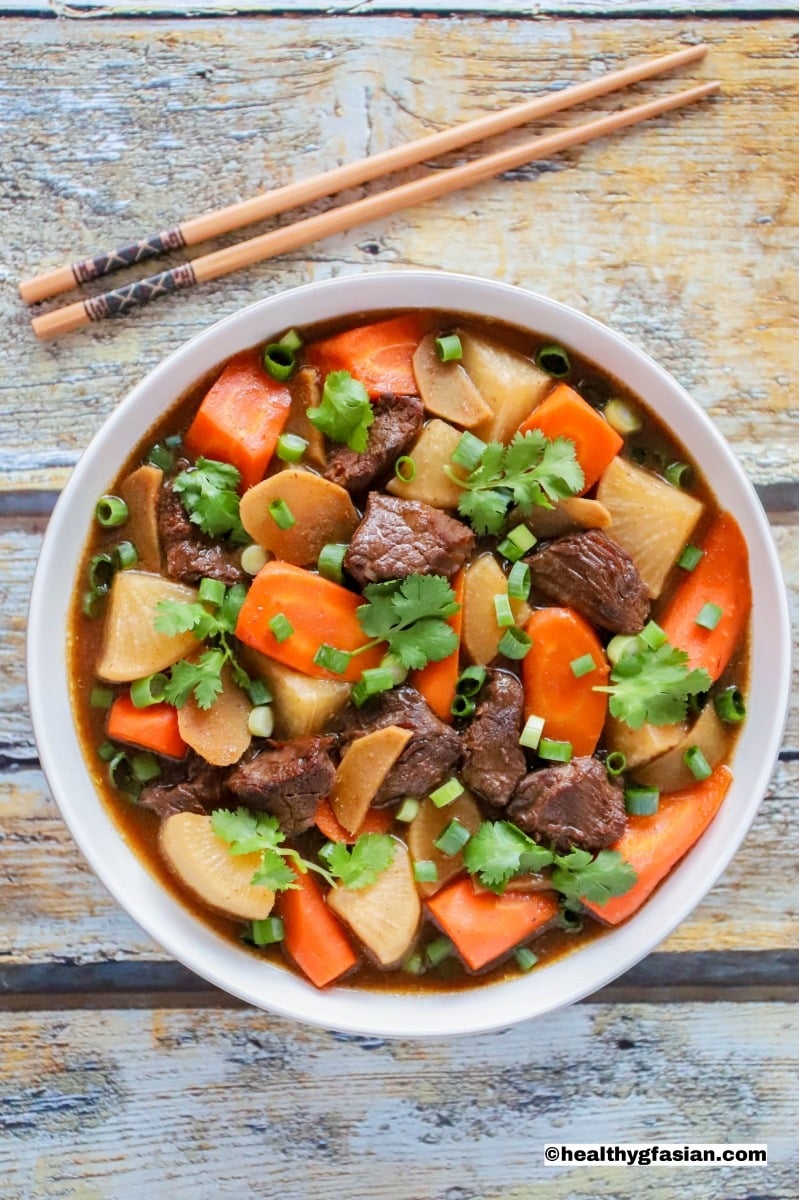
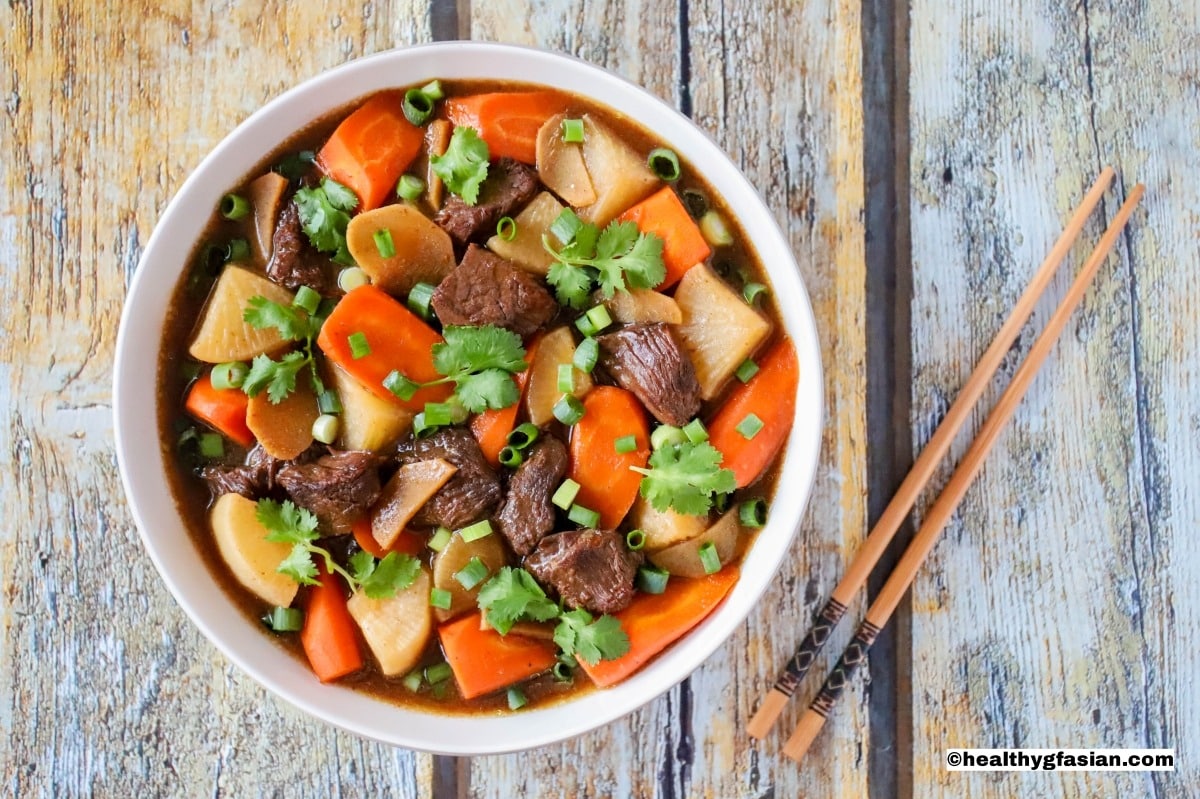
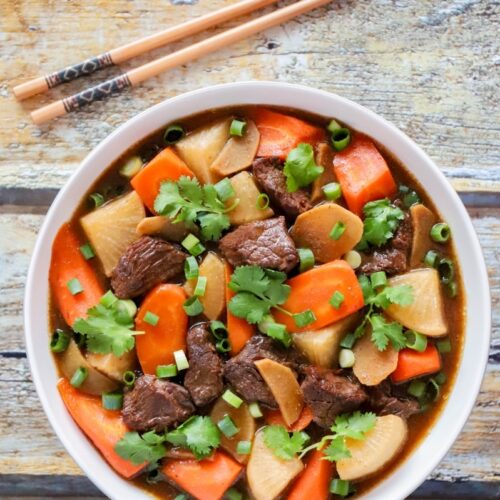
Instant Pot Cantonese Braised Beef
Ingredients
- ¼ cup extra virgin olive oil
- 4 garlic cloves peeled and finely minced
- 1 inch ginger peeled and thinly sliced
- 1.5 kg lean gravy beef (beef shin) trimmed and cut into roughly 2 inch pieces (you can also use lean chuck steak)
- 800 g daikon (white radish) peeled and sliced into thick wedges
- 3 medium carrots peeled and sliced into 2 inch pieces crosswise
- 2 small star anise
- 6 cloves
- 1 piece medium dried madarin or orange peel roughly broken up
- 3 dried bay leaves
- 1 cup water
- Steamed rice to serve For paleo diet, serve with cauliflower rice
For the Sauce:
- ¼ cup blackstrap molasses
- ¼ cup coconut aminos
- ¼ cup medium dry sherry
- 2 tablespoons potato starch mixed with ¼ cup water
- 2 teaspoons salt
- ¼ teaspoons ground white pepper
For the Garnish:
- 3 sprigs coriander (cilantro) including stems, roughly cut into 1 to 2 cm lengthwise
- 2 spring onion (shallots) thinly sliced lengthwise
Instructions
Method 1: Using an Instant Pot – Pressure Cooker function
- Mix and combine all the sauce ingredients and the extra virgin olive oil together in a bowl.
- Add in all the other ingredients and the sauce prepared in step 1. Stir and mix well.
- Cover the instant pot and lock lid. Using the pressure cooker function, set cook time for 25 minutes. Let the instant pot rest for another 10 minutes, carefully release pressure. Unlock lid.
- Garnish with coriander (cilantro) and spring onion (shallots) and serve with steamed rice. For paleo diet, serve with cauliflower rice.
Method 2: Using a Pot on Stove Top
- Mix and combine all the sauce ingredients together in a bowl.
- Heat up a medium pot with ¼ cup extra virgin olive oil and stir-fry the garlic and ginger on low heat until lightly golden.
- Then add in all the beef pieces, star anise, cloves, dried orange peel and dried bay leaves and stir-fry for 5 minutes on high to medium heat.
- Add the sauce prepared earlier and stir-fry for another 5 minutes. Add water and cover with lid and bring to the boil and simmer the beef for 1 hour on low heat.
- Lastly, add in the white radish (daikon) and carrots, mix well with the beef and sauce, bring to the boil and cover with lid again. Simmer on low heat for another 30 minutes or until beef is soft.
- Garnish with coriander (cilantro) and spring onion (shallots) and serve with steamed rice. For paleo diet, serve with cauliflower rice.
Recommended Products
